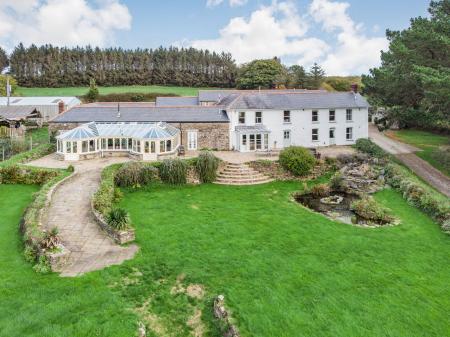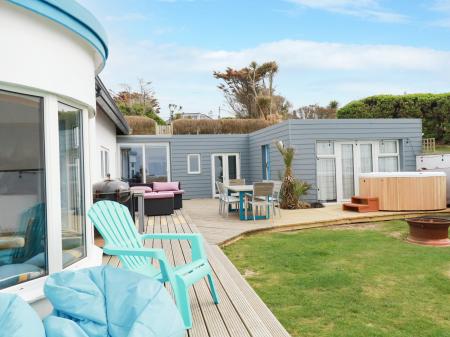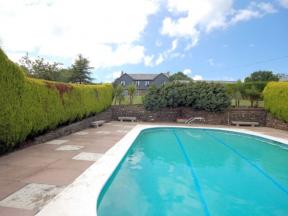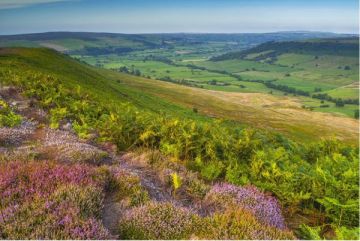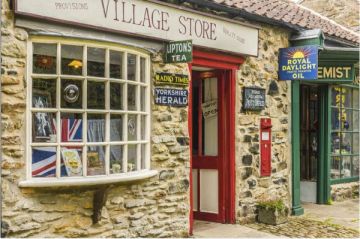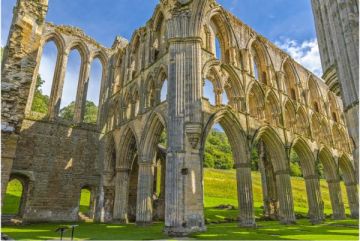Cornwall boasts some of the most beautiful and picturesque villages in Britain, whether it's a tiny fishing port or a community sheltering in the shadow of Bodmin Moor. Here are some of the villages our family has enjoyed visiting most over the years.
I thought of trying to rank them from 15 down to 1, but, honestly, that would be ridiculous - they all deserve a visit! So this is an A-Z list of some of our favourite Cornish villages (literally A to Z as it starts with Altarnun and ends with Zennor).
[All these are villages, with nary a town to be seen. Towns are for another post!]
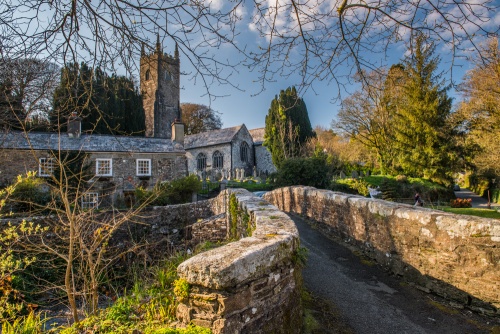
Altarnun is a small village on the northern fringe of Bodmin Moor and is the focal point of the largest parish in Cornwall, covering some 15,000 acres. The parish church of St Nonna is known as the Cathedral of the Moors for its size. In the churchyard stands a 6th-century Celtic cross, a reminder of Altarnun's long history.
Inside the church is a stunning Norman font carved with bizarre faces on each corner, and a late medieval chancel screen. A stone's throw from the church is an ancient packhorse bridge. Just outside Altarnun is Jamaica Inn, the inspiration for Daphne Du Maurier's novel of the same name.

This delightful little village near Bodmin is one of the very few in Cornwall to have a village green. On one side of the green is the Blisland Inn, a former winner of the CAMRA (Campaign for Real Ale) National Pub of the Year Award known for its oak-aged beers and ciders.
On the other side of the green is the 12th-century parish church, dedicated to the 3rd-century brothers St Protus and St Hyacinth (known locally as 'Pratt and Hatt').
Outside the village is a holy well dedicated to St Protus/Pratt and the Neolithic henge of Stripple Stones. The stately home of Pencarrow House is four miles away and there are very good walking trails onto Bodmin Moor.

This picturesque village on Cornwall's north coast is known for its Elizabethan quay, built to handle the transport of slate from the Delabole quarries. Trails lead up from the harbour to an Iron Age promontory fort and the Willapark headland where you will see a coastal lookout tower made from a castellated folly. Beyond Willapark are the remains of an ancient field system known as the Forraburry Stitches.
Nestled into the cliff beside the harbour is the Museum of Witchcraft and Magic, covering all forms of witchcraft in cultures across the world. Here you can see everything from broomsticks to potions, spell books to crustal balls and divination tools.
A trail leads along the rocky coastline to the hanging valley of Pentargon, where a dramatic waterfall plunges almost straight down the sheer cliffs. Just inland of Boscastle is the Valency Valley, where an aspiring young architect named Thomas Hardy met his first wife Emma. Hardy, of course, became one of England's best-loved novelists.

Arguably the most beautiful village in Cornwall, Cadgwith is a deliciously picturesque fishing village on the Lizard Peninsula, south of Helston. Pretty cottages of cob and thatch cluster around the harbour and fishing boats are drawn up on the shore.
There are two beaches, known as The Cove and Little Cove, separated by a rocky promontory known as The Todden. A passage runs through The Todden and links the two beaches.
The South West Coast Path runs directly through the village, and many walkers stop for refreshment at the Cadgwith Cove Inn. If you fancy fresh crab or lobster, then Cadgwith is the place to come.
There is a visitor car park at the top of the cliffs, and walking trails lead down to the harbour, past St Mary's Church, a prefabricated metal building erected in 1895.

Gweek is a rambling village on the Helford Estuary in southern Cornwall, set in beautiful woodland and stunning coastal scenery. Gweek is best known for its National Seal Sanctuary, where injured, sick or distressed marine mammals of any kind are nurtured back to health.
Gweek was a centre of the tin trade as long ago as 450 BC. The Romans used the natural harbour here, and during Tudor times the port was so busy that it needed its own customs house.
Those days are long gone and today the harbour is home to recreational sailing craft. A few miles away is the historic Poldark Mine, and the National Trust's Glendurgan Gardens is slightly further afield.

This pretty little village lies on the east coast of the Lizard Peninsula and faces Helford Passage across the mouth of the Helford River. Author Daphne Du Maurier spent her honeymoon here and was inspired by the village's history as a haven for smugglers to write her novel Frenchman's Creek.
The real Frenchman's Creek can be reached by a footpath from the village centre. You won't find any mysterious ships moored there today; the creek is now a haven for birds, including a large population of herons.
There was once a busy port at Helford, but now only pleasure yachts moor offshore. A seasonal pedestrian ferry takes visitors across the River to Helford Passage on the north bank.
The thatched village pub is known as the Shipwrights Arms and is just one of numerous pretty thatched and cob buildings, some of them dating to the 18th century or earlier.
Part of Helford's charm is that no vehicles are allowed in the village. There is a parking area at the top of the hill overlooking the shore, and from there you follow the road down to a picturesque footbridge over the creek, with a whitewashed thatched cottage on the far bank. This is, in my view, one of the most beautiful sights in Cornwall, a classic, timeless view.

There is not one Looe but two, East Looe and West Looe, on opposite sides of the Looe River. East Looe is larger, has a better beach, and gets more visitors while West Looe is quieter, more traditional and more relaxed. On the quay is the 13th-century church of St Nicholas, which at one time served as the guildhall.
In East Looe is the Old Guildhall, built around 1500 and now serving as a wonderful museum of local heritage. A few steps away is Smugglers Cott, a popular inn built in 1430 and restored in 1595 using timbers from the Spanish Armada.
Offshore is St George's Island, home to a medieval monastery but later used as a secret landing place by smugglers. The island can be reached by a causeway at low tide.

Mevagissey is a traditional Cornish fishing village in St Austell Bay. It is named for two 6th-century Irish missionaries, Meva and Issey. The streets of Mevagissey are a delightful maze of whitewashed buildings lining meandering passageways.
You can hire boats for excursions around the bay or even take a shark fishing trip. Housed in a historic building on the water's edge is the Mevagissey Museum, devoted to the Victorian heritage of the village.
Also by the harbour is the Sealife Aquarium, housed in a former lifeboat. Just outside Mevagissey are the Lost Gardens of Heligan, a 19th-century garden 'lost' for 70 years and now rescued from decay and restored to its former glory. A bit further afield is the Eden Project, a giant series of biodomes housing collections of plants from around the world.

One of Cornwall's most popular traditional fishing villages, Polperro is set in the rocky coastline of south Cornwall near Looe. Narrow, cobbled streets lead down to a pretty harbour, with whitewashed cottages perched on the surrounding hills. Polperro dates to the 13th century and was a centre of the pilchard fishery. Now the old fishermen's cottages are used by holidaymakers.
One thing that makes Polperro so attractive is that so many of the quaint old cottages near the harbour have remained unaltered by time. No cars are allowed, and visitors must walk half a mile from the car park.
Near the harbour is the Heritage Museum of Fishing and Smuggling, where you can discover Polperro's history as a centre for smugglers. Here you can learn about Zephaniah Job (1749–1822), a merchant known as 'The Smuggler's Banker' during the Napoleonic Wars. Also near the harbour is The House on Stilts, a picturesque cottage supported on timber posts, overhanging the River Pol.

This pretty fishing village on the north Cornwall coast is perhaps best-known today as the setting for the popular Doc Martin television series starring Martin Clunes. Much of the filming is done in and around the harbour and regular viewers will quickly recognise many of the buildings. One of those buildings is Fern Cottage on Roscarrock Hill, which acts as Doc Martin's House.
Port Isaac was also the setting for the original Poldark television series.
There is much more to the village than popular TV series, though! Port Isaac was a centre for the pilchard fishery as early as the 16th century. You can watch fishermen unload their daily catch of crabs, fish, and lobsters at The Platt, a cobbled area sloping down to the tidal harbour.
Most of the buildings clustering around the pretty harbour date to the 18th and 19th centuries. The harbour area has been named a Conservation Area to preserve its heritage ambience. A few steps from The Platt leads you to Squeezy Belly Alley, a ridiculously narrow passageway between a pair of cottages.
Though traffic is - technically - allowed near the harbour, I strongly recommend you use one of the clifftop parking areas and walk down into the village.

This large coastal village in south-west Cornwall was once a centre for tin mining but is now a popular destination for tourists. The 15th-century church of St Agnes stands on the site of a Celtic chapel and holy well. In the churchyard stands a medieval wayside cross.
Look for the picturesque, winding alley known as Stippy Stappy Lane, lined with the former homes of sea captains. The Lane appears in Winston Graham's Poldark novels, and the author used St Agnes as the inspiration for his fictional village of St Annes.
There are fabulous clifftop walks, including trails through a Site of Special Scientific Interest (SSSI) known for its rare plants and large populations of dragonflies and butterflies. On the coast is the famous Wheal Coates engine house.
Above the village is St Agnes Beacon, used during the Napoleonic Wars as a signal station to warn of a French invasion. On a clear day it is said that you can spot 32 church towers from the top of St Agnes Beacon.

This pretty village nestles in the Vale of Lanherne a few miles from Newquay. While Newquay is a bustling, busy town, St Mawgan in Pydar is like a village lost in time, a quiet refuge of leafy lanes and pretty cottages.
The village is [probably] named for the 6th-century Welsh abbot Meganus, or Mawgan, to whom the 13th-century parish church is dedicated. Historical highlights include a set of beautifully carved 15th-century bench ends, a late medieval screen, 15th-century memorial brasses and a late medieval churchyard lantern cross.
A stone's throw from the church, across the River Menalhyl, is the Japanese Garden, a wonderful oasis of 2 acres featuring a wide variety of Oriental plants. Here you can enjoy a traditional koi pond, a bamboo grove, a bonsai nursery and a peaceful Zen garden.
Once you've enjoyed your taste of the Orient at the Japanese Garden you can stop in at the Falcon Inn, a traditional country pub built in 1758.
The former manor of Lanherne House is now a Carmelite nunnery. In the grounds is a superb Cornish cross.

This pretty village in North Cornwall is one of the most popular tourist destinations in the county and with good reason. Most visitors come to see historic Tintagel Castle, the legendary birthplace of King Arthur (or, depending on which legend you prefer, the place he was conceived or the site of his royal court of Camelot).
Whatever the truth of the links to King Arthur, the castle is worth visiting in its right for its amazing clifftop location.
You can learn more about King Arthur and his legend at King Arthur's Great Halls on Fore street. The Great Halls were built in 1933 as the home of the Order of the Fellowship of the Knights of the Round Table, a group created to promote Christian values and ideals of behaviour. The centrepiece is the remarkable Hall of Chivalry, illuminated by superb Arts and Crafts stained glass windows depicting scenes from Arthurian legend.
On the clifftop above the village centre is the parish church, dedicated to St Materiana. The church we see today dates to the 12th century but it stands on the site of a 6th-century oratory. Off the chancel is an ancient anchorite's cell with a font brought from Tintagel Castle.
In the heart of the village is the Old Post Office, a picturesque 14th-century building that once served as the Tintagel post office. The house, now preserved by the National Trust, was built around 1380 and remodelled in the Elizabethan period to insert a central hall, open to the rafters. Behind the Old Post Office is a traditional cottage garden.

Veryan is a small village in the Roseland district, close to Truro. It is known for a series of round, thatched cottages built for workers by Jeremiah 'Parson' Trist around 1815. There are five whitewashed cob cottages, one for each of Parson Trist's five daughters. A local legend says that the cottages were built to a round plan so that the Devil wouldn't have a corner to hide in.
In the centre of Veryan is the medieval parish church of St Symphorian. Though the church is medieval it boasts a much earlier Celtic cross. In the churchyard is the longest gravestone in England, built to honour 19 crewmen of the Hera, who died in a wreck off Nare Head in 1914. A stone's throw from the church is the New Inn, a traditional 16th-century country inn with darkened timber beams.
On the edge of Veryan is Melinsey Mill, a restored water mill built (or rather, rebuilt) in 1565.

This tiny village south of St Ives stands amidst wonderful coastal scenery. It was one of the last places in Britain where the natives spoke the Cornish language. Look for the grave of John Davey of Boswednack in the churchyard. Davey (d 1891) was one of the last Cornish speakers.
Zennor is famous for the medieval carving of a mermaid on a bench end inside the 12th-century church of St Senara. The Mermaid of Zennor depicts a beautiful mermaid with a comb and looking glass. In the churchyard is an ancient Celtic cross.
A stone's throw from the churchyard is the Tinners Arms pub, a reminder of the area's long association with tin mining.
A circular trail leads to Zennor Head, owned by the National Trust, where you can often see seals offshore. A few miles away is Chysauster, an Iron Age hut village inhabited from around 100 BC.
This is just a taster of some of the wonderful Cornish villages our family has had the pleasure of visiting over the years.
MOST POPULAR POSTS
